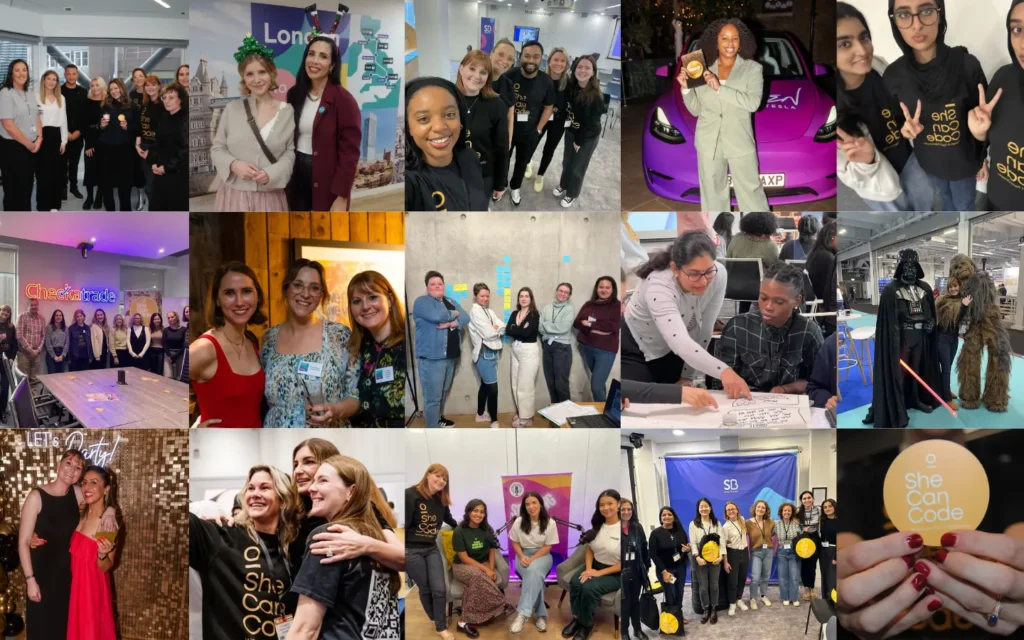It might be 2024, but the gender gap stubbornly persists. In fact, according to the World Economic Forum (WEF), the global gender gap score has only closed 68.5%.
The year-on-year improvement since 2023 was so minuscule (+0.1%) that the WEF calculates it will take around 134 years to reach parity. This sobering statistic underscores the urgency of our situation.
In the tech industry, the picture is particularly concerning. Half of the women in tech are leaving their jobs by the age of 35, according to Accenture, largely due to ‘poor inclusive culture’. If we look at recent press stories, the male-dominated culture of some big tech firms is getting worse, not better.
Although we see the words “gender equality” as a common topic and trend, there is still an abundance of hard work to be done. We know that when both men and women have equal opportunities, there are better outcomes across education, careers, wealth and well-being. In economic terms, a maximised talent pool ensures that both men and women can contribute fully, leading to improved performance in businesses and organisations.
What’s more, achieving gender equity could put Europe in a strong position within the fiercely competitive tech race. So, on a direct level, what can we do?
A head start: Let’s build on Europe’s slender gender gap
There are positives. When the regions’ data is split out, Europe and the US continue to lead the WEF Index, with a gender parity score of 75% and 74.8% of the gap closed respectively. European economies occupy seven spots out of the global top ten. Iceland (93.5%) is again ranked first, and has been leading the index for over a decade. Finland comes second (87.5%) and Norway third (87.5%).
The numbers speak volumes. We’re in a strong position to build on that head start, and compete with confidence on the global stage.
Firstly, let’s think about what works, and form our vision for gender equity from there. As someone who arrived in the UK as a refugee from the war in Bosnia, I have faced my share of challenges. I landed in a new country, not speaking English fluently, and had to navigate the complexities of a new culture and society.
My journey into the tech industry was not straightforward, and I had to overcome numerous barriers. This personal experience has given me a unique perspective on the importance of diversity and inclusion. As a woman in this field, I have seen first-hand what empowers women to work their way up in tech. I’ve also witnessed women’s tech careers tapering off due to unconscious bias in hiring, family life pressures, and limited access to networking opportunities, mentors and sponsors.
I’ve learnt that, if we do not notice and encourage future leadership talent, there is a big risk that ambitious women in tech—and any minority that is not heard—will take their skills elsewhere, or simply fail to reach their full potential.
We need to create an environment where everyone, regardless of gender or background, can thrive and contribute to the innovation and growth of the tech and wider business sectors.
Planting the STEM career seed
With no surprise, Iceland ranks as the top country for supporting women in STEM, with the highest average female salary across all job roles and near-equal representation in STEM roles (45%), according to CloudZero research in 2023.
In contrast, the UK faces challenges despite a high percentage of female STEM graduates (38%), with one of the world’s highest gender wage gaps (14%) and only five STEM roles per 1,000 female workers.
Education providers in Europe should do better. Schools and colleges can play a pivotal role by providing engaging and interactive STEM programmes and highlighting the achievements of female scientists and engineers. Young women can gain hands-on experience, if schools introduce STEM and computer science at an early age. Additionally, partnerships between educational institutions and tech companies are increasingly offering internships, scholarships, and real-world project experiences, making STEM careers more accessible and appealing to young women. We should build on this.
The transition from education to a long-term career in tech also requires targeted support. Organisations should establish structured onboarding programmes, continuous professional development, and clear career advancement pathways tailored to address the unique challenges women may face in the tech industry. As an example, Cisco Networking Academy was set up in 1997 to connect people who aspire to tech jobs with educators and employers. The academy gives access to free online classes and in-person tuition for in-demand tech skills such as cybersecurity and programming and has taken on 20.5 million students, since its inception. Students from diverse backgrounds have access to a global community of instructors, peers, and alumni.
Mentorships feeds the female leadership pipeline
Providing networking opportunities, such as women-in-tech groups and industry conferences can help women build connections, gain visibility, and find mentors who can guide their career progression.
My entire career has been built on personal drive, but I have also benefited from the support and encouragement of others. In turn, I’m a firm believer that if you’ve ‘made it’, you should commit to bringing people along with you. This involves not only providing guidance and advice but also advocating for individuals, and opening doors to new opportunities.
In the past nine years, I have mentored almost 100 women and sponsored 25 female professionals. The women I mentor are at every career stage, from junior to C-suite level. I spend at least 25 days per year supporting other women in technology, and work directly with individuals to effect grassroots change.
If you can see it, be it
Having visibility of women climbing the ranks in the tech sector has motivated me too. I love the expression: ‘If you can see it, you can be it’. In Europe, Ida Tin, the co-founder of Clue, Roxanne Varza, Director of Station F, and Anne Boden, founder and CEO of Starling Bank, are all extremely worthy role models.
When people see others like themselves in the media, in leadership, and public roles, it can make them feel empowered, showing them that their dreams are possible. This idea highlights how important representation is for promoting diversity and inclusion, as it helps to remove obstacles and change stereotypes.
The 2024 bumper election year presents a unique opportunity to make progress in closing the global gender gap, according to the World Economic Forum. Powerful female leaders are taking to the world stage. This is a critical moment to advocate for policies and initiatives that promote gender equality, particularly in the tech sector, where gender disparity is so stark.
Menopause: A chapter, not an end to careers
A significant but often overlooked factor contributing to the departure of senior women from the tech industry is the impact of menopause symptoms. A recent report by Korn Ferry Institute, in partnership with Vira Health, found that of 8,000 women surveyed globally, only 26% said they received support from formal work policies or programmes. Approximately one in four women said they quit their job or are considering it, and 44% of those women were senior leaders or senior executives.
The tech industry, known for its high-pressure environment, can be particularly challenging for women managing menopause, which may exacerbate their symptoms and stress levels.
To address this issue, tech workplaces must foster a supportive and understanding environment for women going through menopause. This might mean implementing menopause-friendly policies such as flexible working hours, access to private rest areas, and providing educational resources for all employees to increase awareness and reduce stigma.
By creating an inclusive workplace that acknowledges and supports the needs of women experiencing menopause, we can help retain valuable senior female talent and ensure they continue to contribute their expertise and leadership to the tech industry.
Diversity delivers
I’m going to state the obvious here: It is essential to create a workplace where everyone feels valued and empowered to bring their authentic selves to work.
Innovation thrives in diverse environments. Diverse teams bring different perspectives and ideas, leading to more creative solutions and better decision-making. By promoting gender equality and diversity, we are not only doing the right thing, but also driving the success and competitiveness of our businesses.
Let’s not wait until 2158 for gender parity. Rather, let’s commit to making progress. The gender gap in tech is a complex issue, but it is not insurmountable. By working together, we can create a more inclusive and equitable industry that benefits everyone.








